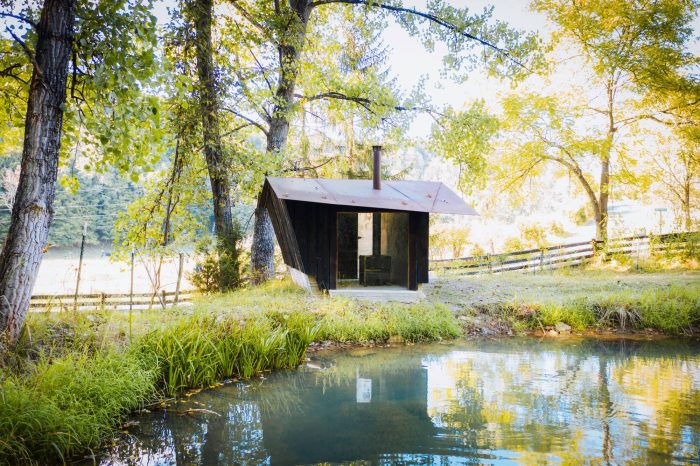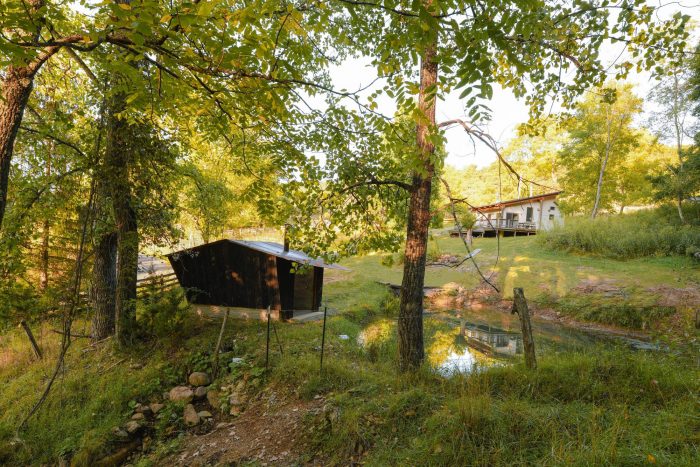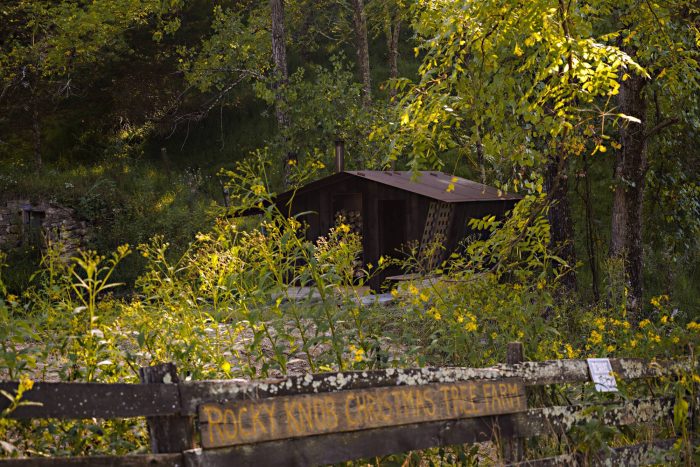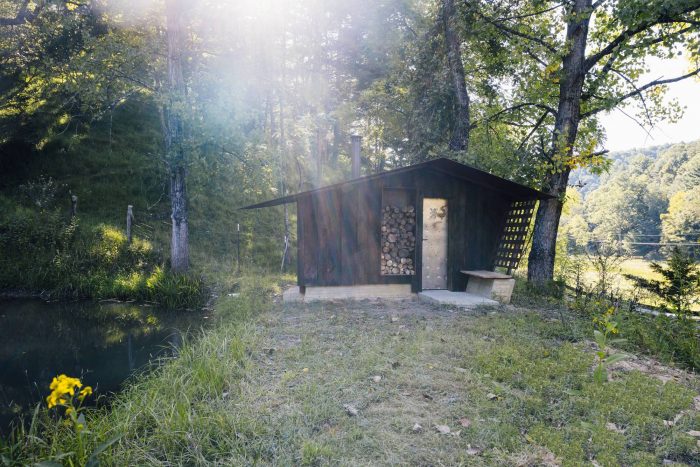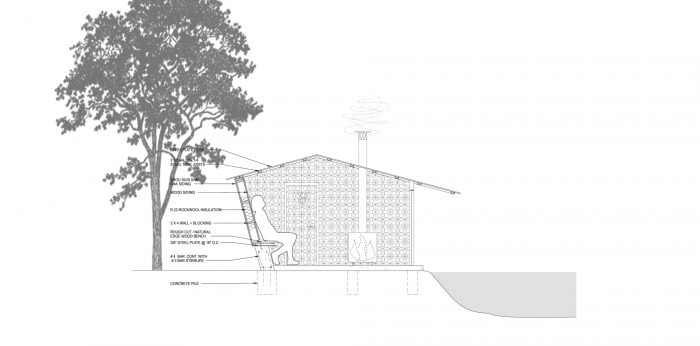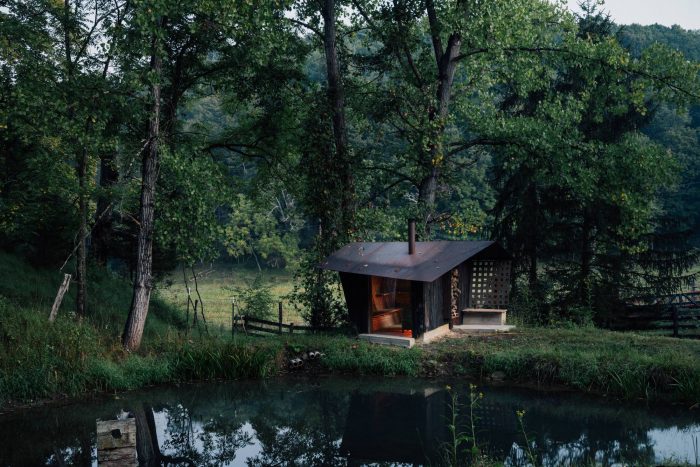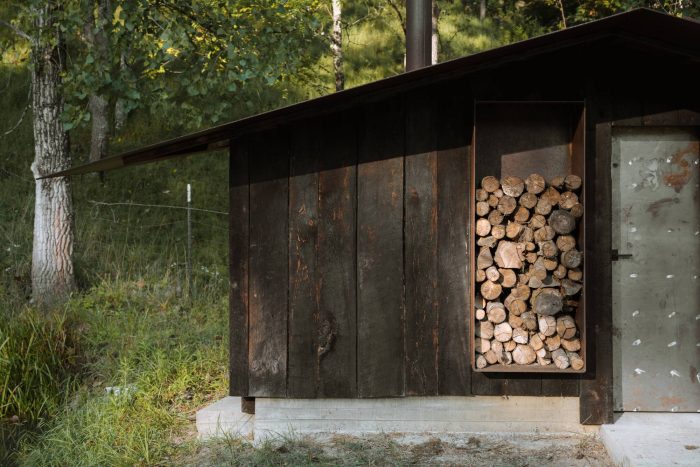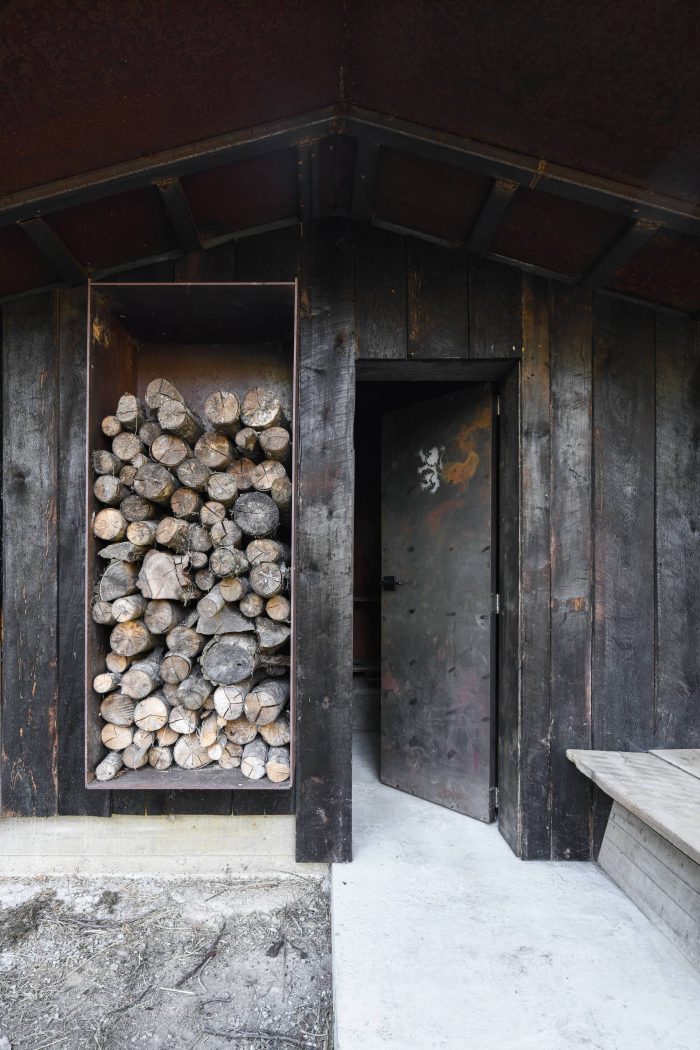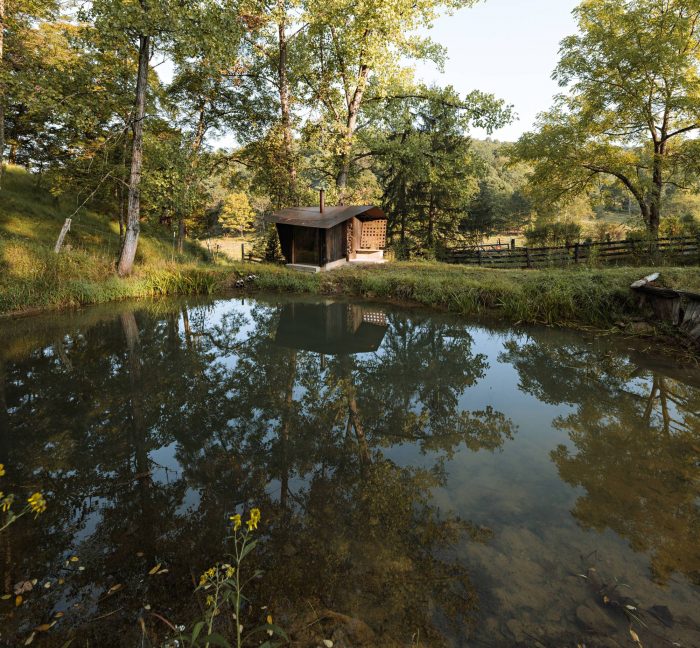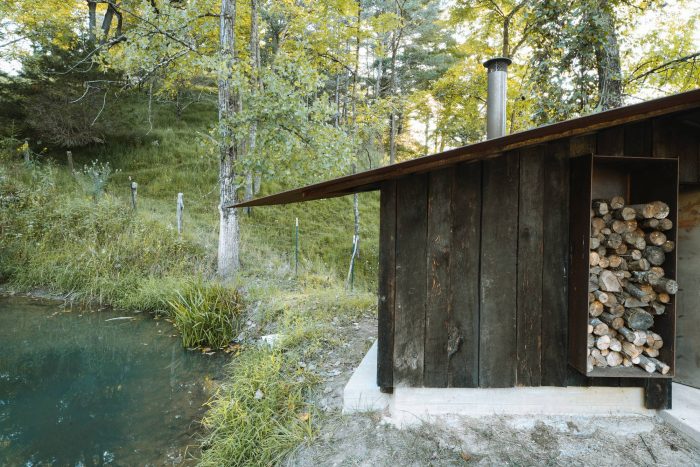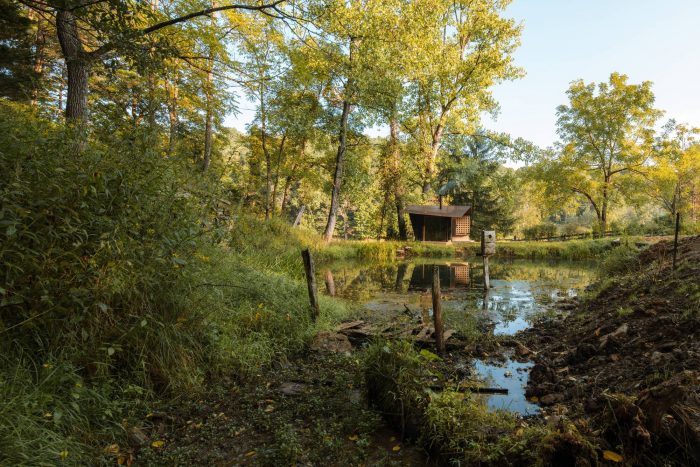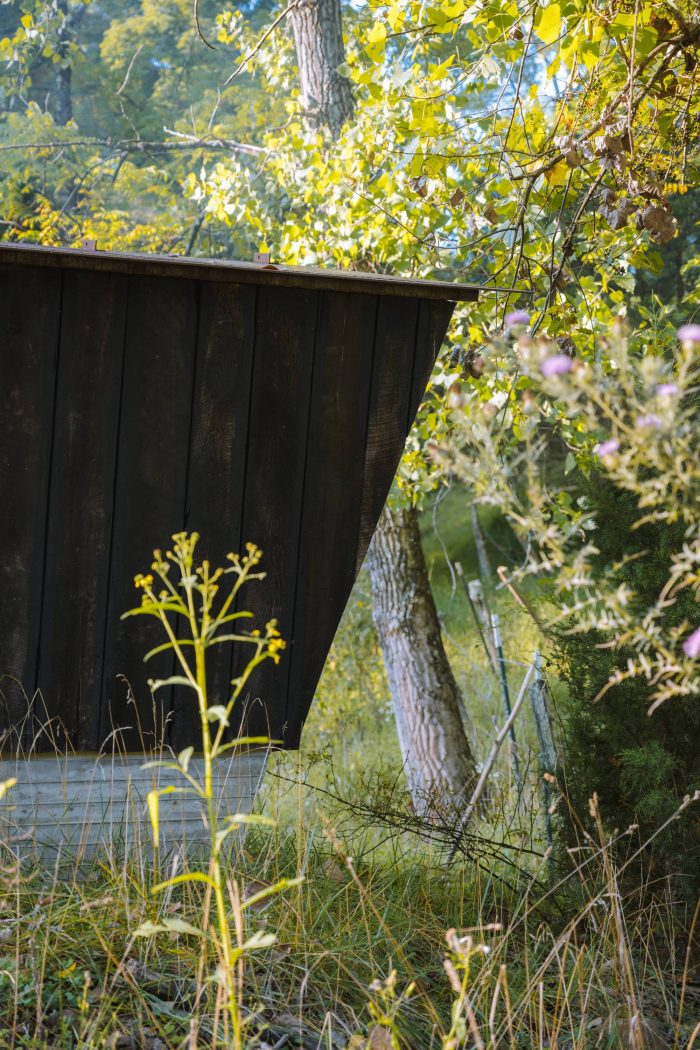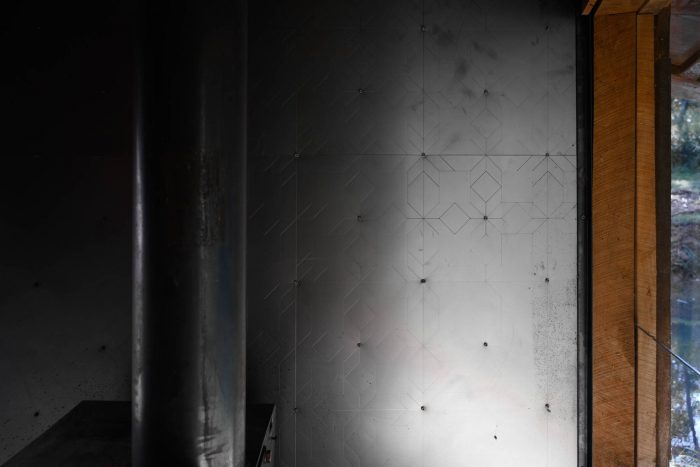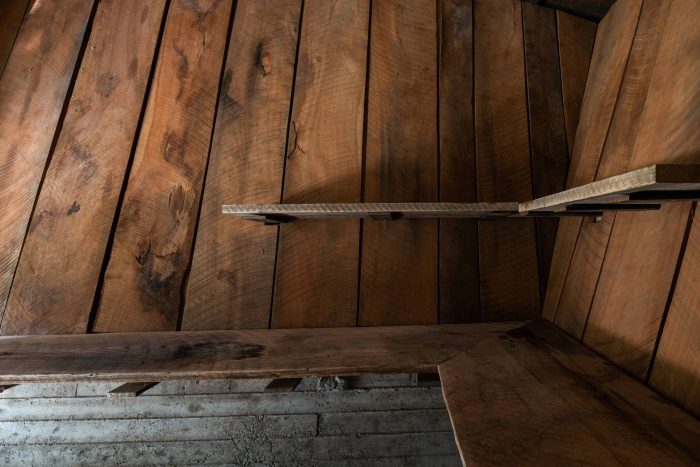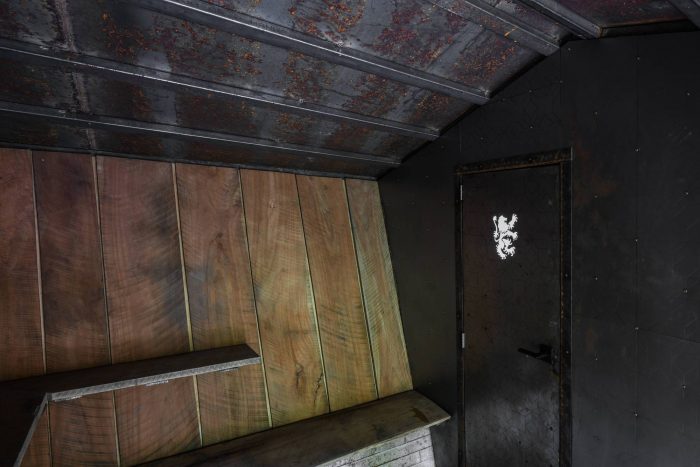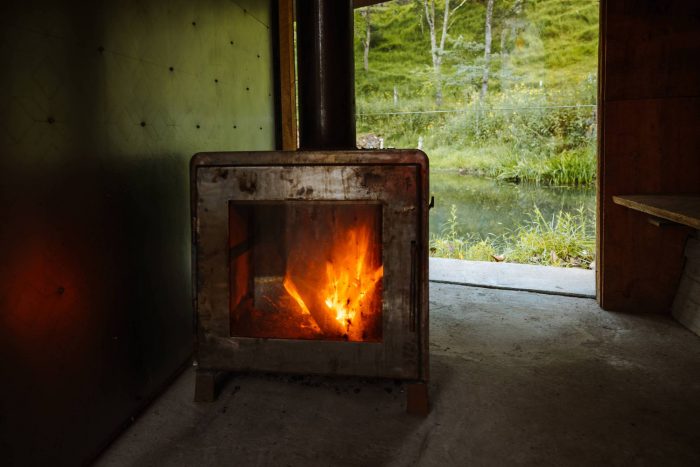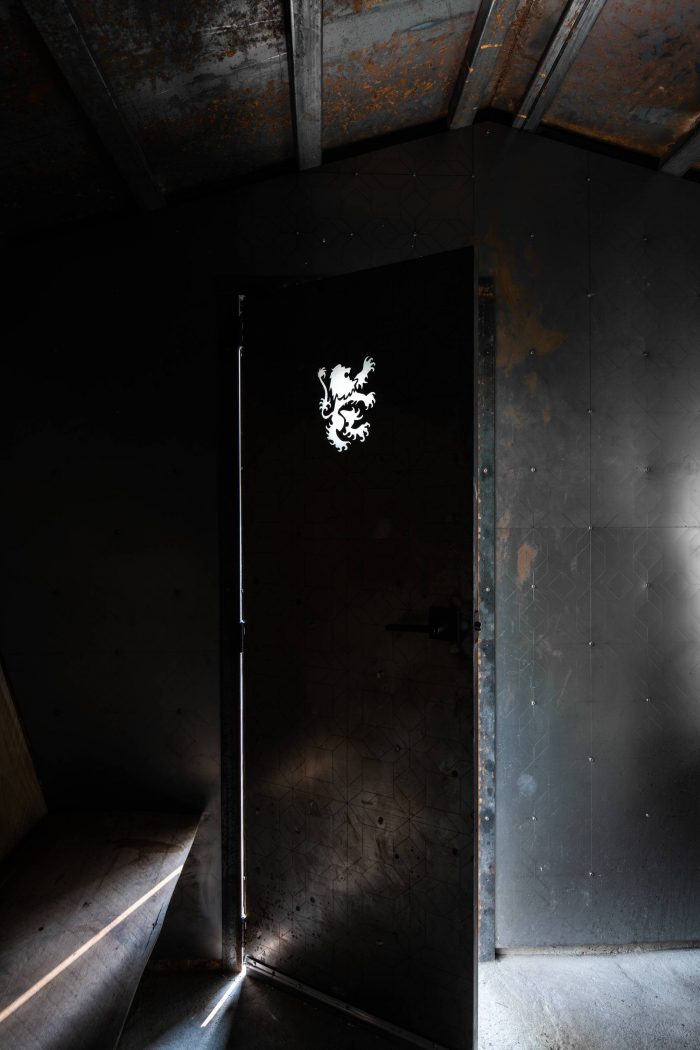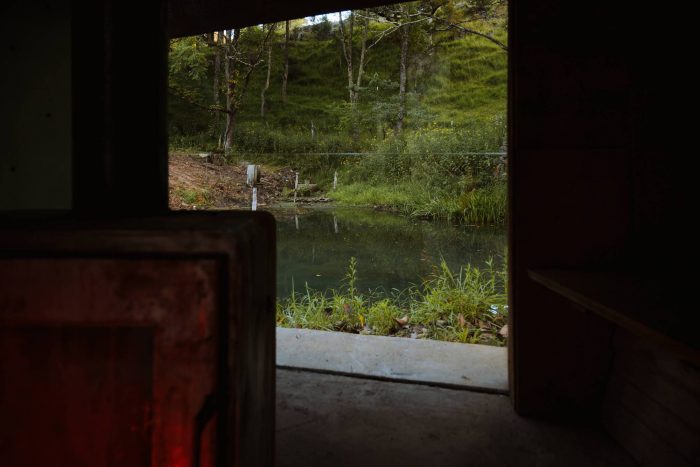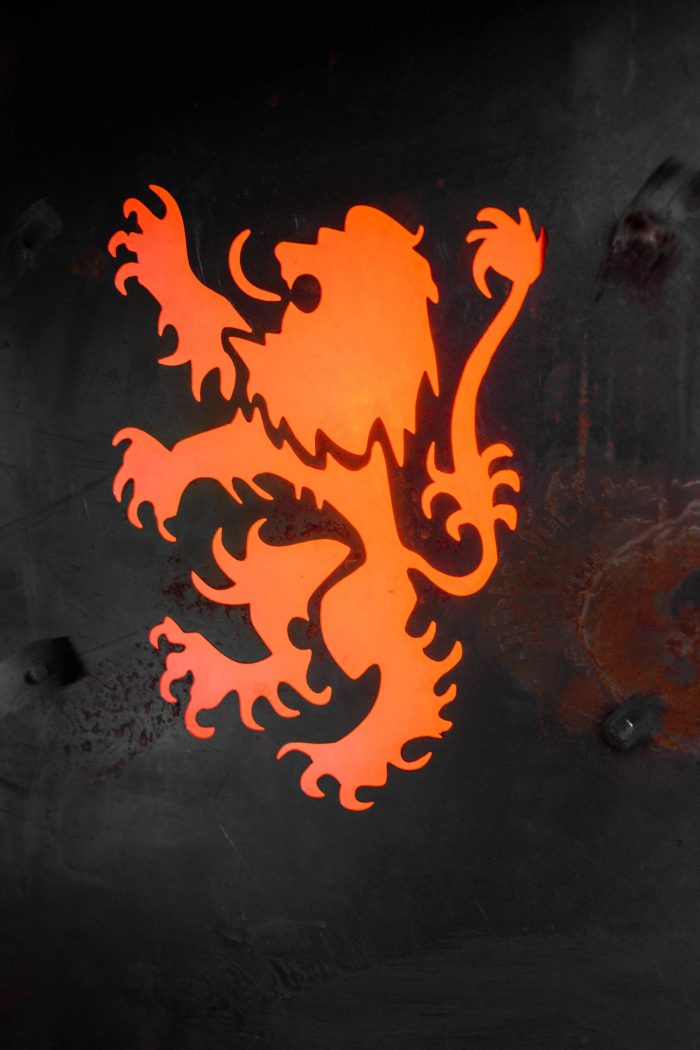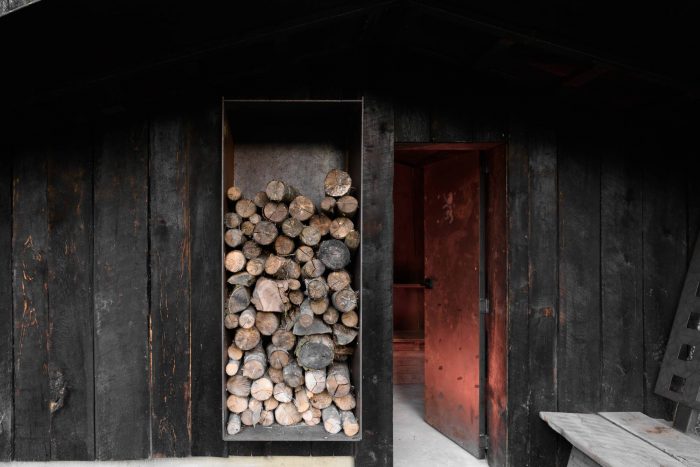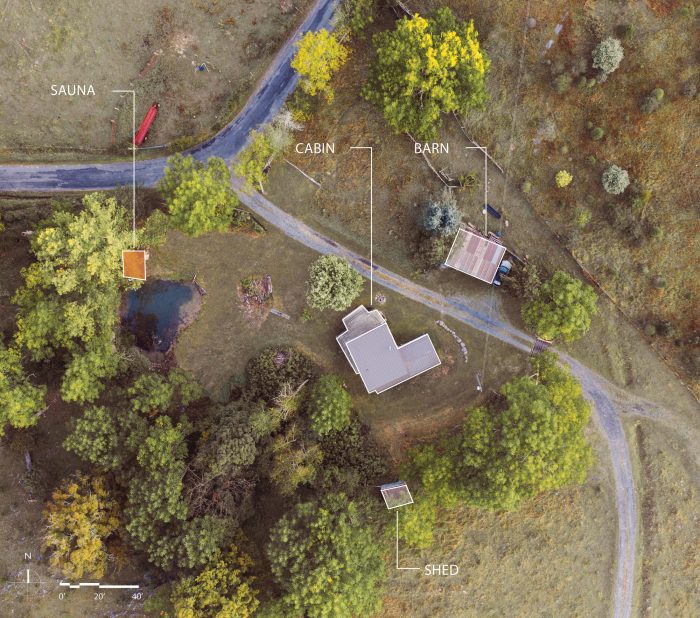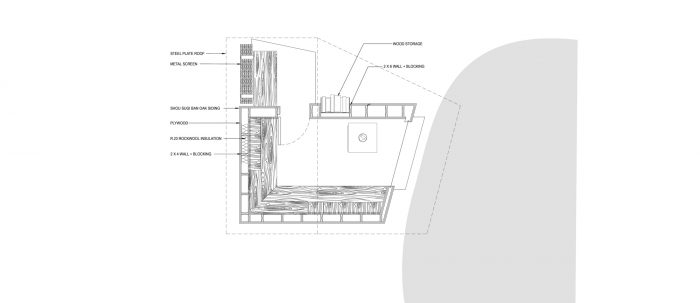在一个偏远的山区农场,自1970年代末以来,建造了一系列简陋的桑拿房,每一次的迭代都在相对持久地进步。遗憾的是,最后一次实用性的迭代在第一次迭代四分之一世纪后烧成灰烬。在15年的时间里,该遗址一直处于休眠状态,这为另一代人复活这个精神圣殿创造了条件。这一次,项目被重新设计为研究驱动的设计/建造;融合学生、专业人员和工匠,探索久经考验的建筑技术以及新的方法。
On a remote mountain farm, a series of rudimentary saunas had been constructed since the late 1970s, each iteration advancing in relative permanence. Unfortunately, the last utilitarian iteration burned to ashes a quarter-century after the first. For 15 years the site lay dormant, setting the stage for another generation to resurrect the spiritual sanctuary. This time the project was reimagined as research is driven design/build; blending students, professionals, and craftsmen, exploring time-tested construction techniques as well as new methodologies.
团队还研究了人类历史上的桑拿传统,其结果直接影响了设计,抽象地参考了历史传统,同时也接受了区域农场的乡土气息。虽然在概念上是一种资产,但桑拿浴场的偏远性也是围绕着团队10天的旅行来建造它的主要挑战。后勤方面的复杂因素包括如何将材料和物资运到该地,以及如何在位于小池塘边的工地上实际工作。
The team also researched sauna traditions throughout human history, the results of which directly influenced the design, abstractly referencing historic traditions while embracing regional farm vernacular. While an asset conceptually, the saunas remoteness was also a primary challenge surrounding the teams’ 10-day sojourn to construct it. Logistical complexities included getting materials and supplies to the property as well as physically working at the site which sits at the edge of a small pond.
在没有重型机械的情况下,所有的工作都要靠人工或小型电动工具来完成。虽然刻意做得很小,而且是手工制作,但设计的主要部分需要相当的技术专长和施工能力,其中大部分是由团队在现场学习的。这个项目是真正的离网,由太阳和月亮的昼夜节律自然照明。该项目采用主动和被动技术来保持热量,将坚固的隔热建筑围护结构和小型高效的燃木炉结合在一起。
Without access to heavy machinery, all aspects of the work were completed manually or with small power tools. While intentionally small and handcrafted, major components of the design required considerable technical expertise and construction capability, much of which was learned by the team on-site. This project is truly off-the-grid, naturally lit by the circadian rhythms of the sun and moon. Heat is maintained using both active and passive techniques that blend a robustly insulated building envelope and a small, high-efficiency wood-burning stove.
炉子本身也是以类似的设计/建造方式创建的,曾获得美国自然资源部下一代木炉设计挑战赛的大奖。选址是有目的的,新的结构直接位于以前桑拿结构所在的焦土残余上。通过重新利用原有的足迹,新结构限制了对自然环境的干扰,同时也尊重了该地的历史。
The stove itself was created in a similar design/build manner, having been the grand prize winner of the U.S. Department of Natural Resources Next Generation Wood Stove Design Challenge. The siting is purposeful, with the new structure located directly on the remnants of scorched earth where the previous sauna structures once stood. By reusing the original footprint, the new structure limited disturbance to the natural environment while being deferential to the history of the place.
此外,朝南的全玻璃墙面是用一个回收的淋浴门制作的,通过深层的悬挑遮挡了中午的阳光。粗切木材从该地早期的建筑中重新利用,广泛用于外墙覆层、内墙和内外长椅。甚至连用于浇筑板式混凝土的新尺寸木材也被重新利用,作为毛坯框架。为了避免使用石油/化学涂料,覆层在现场进行了炭化处理。
Furthermore, the south-facing fully glazed wall, created using a reclaimed shower door, is shaded from mid-day sun by a deep overhang. Rough-cut lumber was repurposed from earlier structures on the property, used extensively for the exterior cladding, interior walls, and both interior and exterior benches. Even the new dimensional lumber used to cast the board-formed concrete was repurposed as rough framing. The cladding was charred on-site to avoid petroleum / chemical-based finishes.
建筑师:GriD Architects
面积:67平方英尺
年份:2020年
摄影作品:Brycen Fischer Photography
制造商:Alt Welding, Bill’s Portable Welding, Elemental Metalworks, MF Fire, MillerMetal Fabrication
选择家具设计和施工顾问:Ed Leedy
建筑总监:Adam Read
城市:上城区
国家:美国
Architects: GriD Architects
Area: 67 ft²
Year: 2020
Photographs: Brycen Fischer Photography
Manufacturers: Alt Welding, Bill’s Portable Welding, Elemental Metalworks, MF Fire, MillerMetal Fabrication
Select Furniture Design And Construction Consultant:Ed Leedy
Construction Directors:Adam Read
City:Upper Tract
Country:United States


